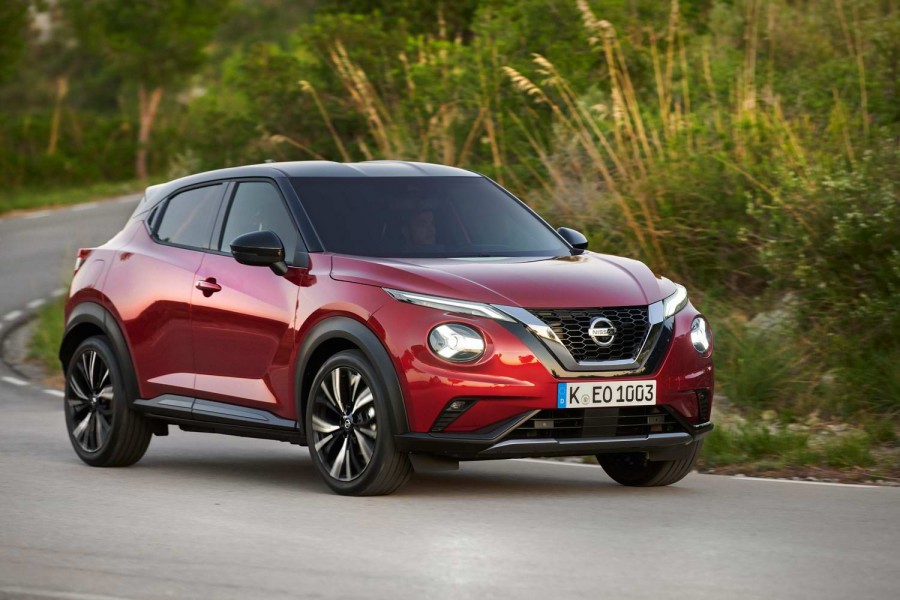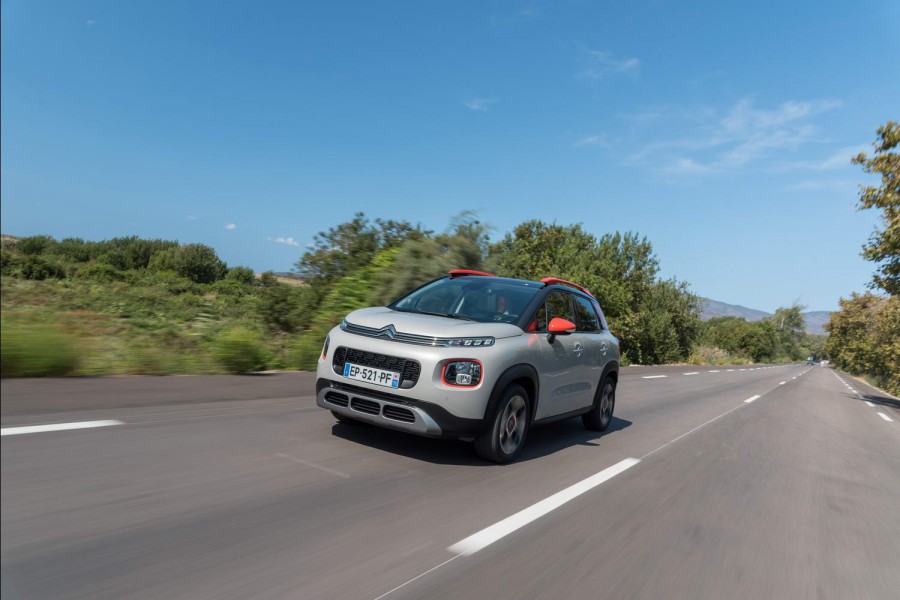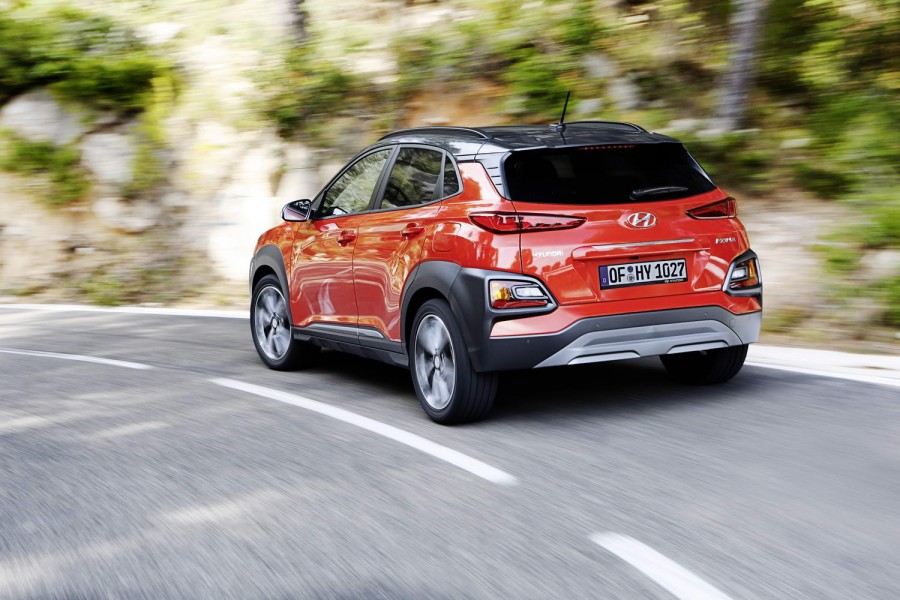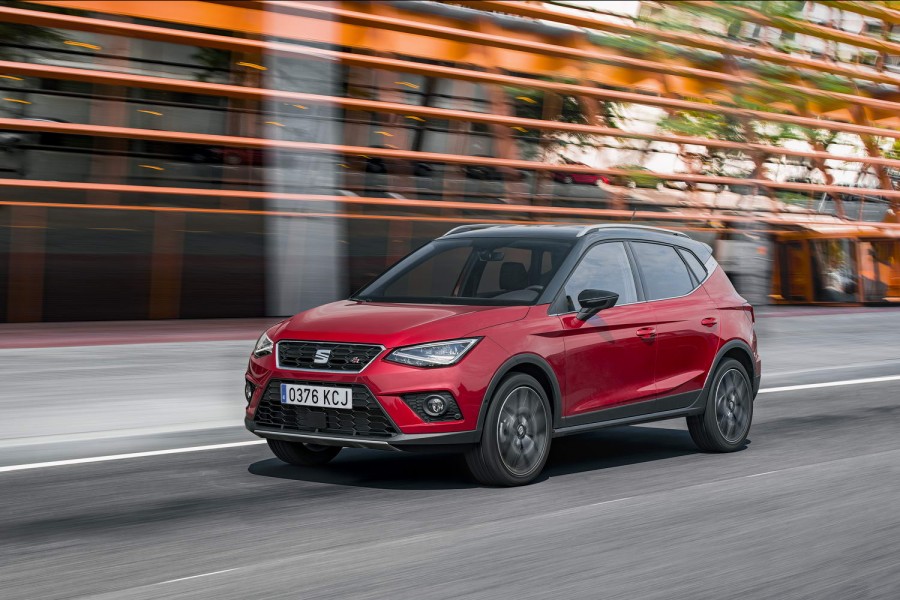Since its debut in 2010, the Nissan Juke has racked up sales exceeding 1.5 million units globally. The Japanese carmaker (somewhat deservedly) claims to have kickstarted the compact crossover segment with it. These days, competition is rife, which makes it a good thing that this all-new Nissan Juke packs plenty of improvements.
In the metal
The styling of the original Nissan Juke certainly polarised opinion. That said, it didn't do any harm to its success, and the fresh design of this second generation Juke should make it even more popular. New LED daytime running lights work well with the 'V-motion' grille shape to emphasise the car's more substantial presence up front. Meanwhile, it's possible to get 19-inch wheels, which fill up the arches nicely - and they suit the sporty body kit that features on most models.
The Juke has grown by small amounts in every direction. It is now 29mm wider with the length increasing by 75mm. More importantly, it has been stretched by 105mm between the front and rear wheels, contributing towards a growth in rear knee room by a quoted 58mm. It's also 13mm taller, helping boost rear headroom by 11mm. On the practical front, boot capacity - an issue in the first Juke - gets a boost of 20 per cent to 422 litres. Flip the split-folding rear seats down and that can increase to 1,305 litres.
Just as important as growth in the right places is the improvement in the quality of materials and layout of the cabin. Our time was spent in the top-spec N-Design models, though the presence of two examples highlighted how it would be possible to customise the interior to suit different tastes. Higher quality plastics mix with flashes of high gloss piano black on the centre console and around the gear selector. Complementing these are additional materials like sporty dark Alcantara or vibrant bright red leather. The single-form seats provide good levels of lateral support as well as looking smart.
Driving it
All you have to do when choosing a new Juke is to decide whether to have a six-speed manual or seven-speed automatic gearbox. Just one engine - a turbocharged three-cylinder petrol unit - is available, though some in Nissan hint that a hybrid model could feature in the coming years. That three-cylinder engine is well-suited to the Juke, providing more than enough power to move it along at a healthy pace. It runs smoothly and isn't as coarse-sounding as some three-cylinder engines are. Three driving modes - Standard, Eco and Sport - deliver subtle differences to the car's driving characteristics, though you're unlikely to feel the need to shuffle through them that often.
The seven-speed automatic comes from Getrag and is a dual-clutch setup, shifting between gears quite smoothly. Its lower gear ratios are short enough to keep the Juke feeling nippy in town, while the seventh gear is long enough to provide comfortable motorway cruising. Even at higher speeds, the road and wind noise are well-suppressed. That quieter cabin is thanks in part to more targeted use of sound insulating materials and glass that is a little thicker than previously. The ride quality doesn't appear to suffer on the largest wheels, with the Nissan striking the right balance between comfort and retention of body control, allowing for those who fancy driving with a bit more enthusiasm to not feel short-changed.
If you're doing long distance on a motorway, the optional Pro Pilot system takes away some of the strain, providing lane keep and adaptive cruise control functionality. Equally, if you're scything through city traffic, the light but responsive steering leaves you feeling well in control.
What you get for your money
Irish pricing for the Nissan Juke starts at €21,995, slotting it in at the more affordable end of the segment where it competes directly with the slightly cheaper Hyundai Kona and matches the Citroen C3 Aircross. That said, the entry-grade XE specification is a little on the basic side from a design perspective, but has most things you'd want inside. It features 16-inch steel wheels, cruise control with a speed limit function and traffic sign recognition. Hill start assist, an intelligent lane intervention and warning system, along with Bluetooth and a 4.2-inch TFT display, round off the highlights.
Moving up to the SV version nets you an eight-inch touchscreen display and an infotainment system that also provides Android Auto and Apple CarPlay connectivity. A rear-view camera, 17-inch alloy wheels and the option of heated front seats and automatic wipers make this the one you should look at as a minimum. The SV Premium adds on a seven-inch TFT screen for the instrument cluster, rear parking sensors, access to Nissan's connected services, automatic air conditioning and an electronic parking brake. From this grade, buyers can optionally add a two-tone roof and Nissan's Technology Pack that groups together a 360-degree camera system, the ProPilot driving assist, Blind Spot Intervention and Rear Cross Traffic Alert.
The SVE is one of the top two trims and takes the SV Premium and makes the optional Technology Pack standard as well as adding 19-inch alloy wheels and satellite navigation. If you prefer a more design-led Juke, the new N-Design spec delivers the same large 19-inch alloy wheels, two-tone roof colour scheme and painted door mirrors, with heated seats inside. You can still choose to add the Technology Pack and an uprated Bose stereo system. By now you'll be spending €28,295 plus the upgrade packs mentioned above. Additionally, the seven-speed automatic transmission will carry a €1,500 price premium over the manual prices listed.
Summary
The Nissan Juke has managed to shake off its polarising design while still retaining plenty of appeal. A roomier interior and larger boot should widen its appeal, while the noticeable improvement in cabin quality is welcome. Just as importantly, the turbocharged petrol engine suits it perfectly and mated to the automatic transmission leaves it ideally set for urban driving and commuting.



























